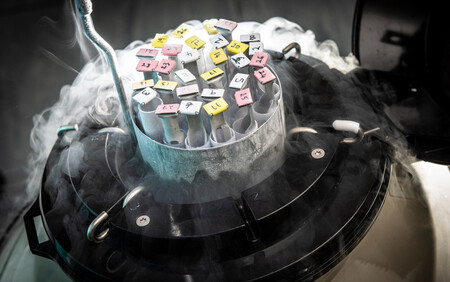
IVF developments since the birth of the world's first IVF baby
The birth of Louise Brown, the world’s first “test-tube baby’’, heralded the beginning of a new age for fertility treatments the world over. In the lead up to her 42nd birthday on the 25th of July, we take a look at how IVF treatments have changed since that landmark day in 1978.
IVF Births
Then:
On the day of Louise Brown’s birth, her mother was brought to her Caesarean section via a darkened corridor with only a select few members of the hospital’s staff being aware of the procedure in an effort to avoid unwanted media attention.
Now:
IVF births have become relatively commonplace with an estimated 8 million IVF births occurring since Louise Brown’s birth.
Egg/Embryo Freezing
Then:
Until the mid 1980’s there was no option to freeze eggs or embryos. This meant that women wishing to try subsequent cycles had to undergo the uncomfortable egg collection procedure again.
Now:
In the event that an IVF treatment cycle produces more embryos than needed, these can be frozen and used at a later date.

Treatment Cycles
Then:
In the early days of IVF women were required to remain hospitalised for most of their treatment cycle with all of their urine being tested so hormone levels could be monitored sufficiently.
Now:
Women can continue to lead their lives much as they would normally - with the addition of regular appointments for ultrasounds and blood tests.
Egg Retrievals
Then:
With no way to control exactly when ovulation would occur, egg retrievals had to be scheduled exactly 26 hours after hormone monitoring indicated ovulation. This meant that egg retrievals could occur at any time regardless of convenience - even in the middle of the night.
The egg retrieval procedure itself required invasive surgery, with a small incision being made on the abdomen so that a camera and tools could be inserted.
Now:
Injectable fertility drugs can be used to control when ovulation will happen. This means that egg retrieval procedures can be scheduled at a convenient time, as well as increasing the chance of success by allowing doctors to have more control of the ovulation process.
The egg retrieval procedure no longer requires invasive surgery, with an ultrasound guided needle being used to retrieve the eggs. This development means that the procedure is less risky and involves a shorter recovery time.

Cost
Then:
In the early days of IVF, the cost was prohibitive for the majority of the population with treatments coming in at £3,000 per cycle at a time when the average yearly salary was just £6,000.
Now:
While fertility treatments are still expensive, the price has decreased significantly in proportion to the average salary. Some patients now even qualify for NHS funded treatments. Here at Complete Fertility, we also provide interest free payment plans for those who don’t qualify for NHS funding.
The past 42 years have brought about a number of significant developments in the world of fertility treatments and we’re looking forward to seeing what the next 42 will bring. If you are considering fertility treatment, we would love to hear from you, just contact us to find out about the best options for you.

